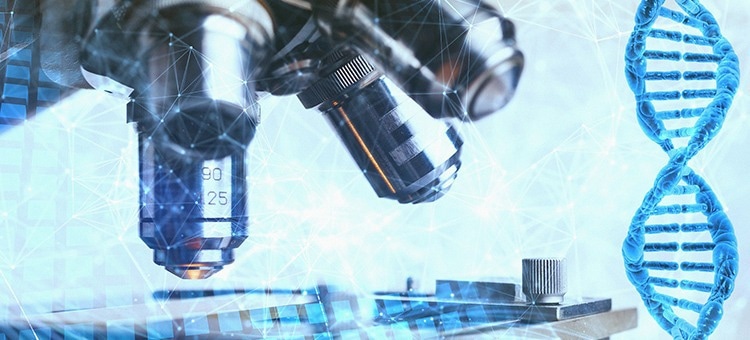Antimicrobial resistance genes are found in bacteria in a hospital ward, but which gene? Characterizing bacterial DNA is challenging for laboratories with low financial resources since it generally necessitates the purchase of expensive equipment. Chalmers University of Technology researchers have devised a method for detecting certain bacterial genes that encode resistance using conventional microscopes, which are already used to diagnose TB in low-income countries.

Image Credit: Pixabay.
Antimicrobial resistance is one of the world’s most serious health problems, as common diseases are no longer treated with antibiotics. For example, neonatal sepsis, or severe bacterial blood infections in newborn children, can result in serious sickness and death.
On plasmids, the circular DNA molecules that do not relate to the chromosomal bacterial DNA, the genes providing resistance to bacteria, for example by breaking down antibiotics, are frequently identified. Plasmids have the ability to transfer across bacterial strains and species, allowing them to proliferate quickly within a bacterial community.
Microscope already present in many labs
Effective and simple methods are needed to characterize bacterial plasmids and detect resistance genes when an infection spreads in hospitals. This is a problem for laboratories with limited resources as existing methods require expensive equipment.”
Fredrik Westerlund, Professor, Chemical Biology, Chalmers University of Technology
Many laboratories in low- and middle-income countries already have standard fluorescence microscopes thanks to a tuberculosis diagnosis initiative. This was Fredrik Westerlund’s study group’s starting point. They used these microscopes at the medical laboratory of their partners in Dar es Salam, Tanzania, to develop their novel approach.
Linear DNA molecule can be detected
The researchers employed CRISPR-Cas9, or gene scissors, to discover specific genes. CRISPR-Cas9 can detect and cut DNA strands at any specified sequence, making it possible to find specific genes.
If a resistance gene is present on the plasmid, it will be cut by Cas9. The DNA is then stretched on a glass slide and imaged with fluorescence microscopy, and the linear molecule can be detected. The images for analysis, can be acquired by a regular smartphone, which you can easily attach to the microscope eyepiece.”
Gaurav Goyal, Postdoctoral Researcher, Department of Biology and Biological Engineering, Chalmers University of Technology
“Any microbiological lab can perform this plasmid analysis”
The approach is presently meant for epidemiological research to describe bacterial plasmids and understand the transmission of antibiotic resistance, according to Gaurav Goyal. Examining how many newborns in a hospital ward possess bacteria with resistance genes, for example, may be useful. It may potentially be utilized for diagnostics in the future.
We started to develop the method for laboratories with limited resources, but any microbiological lab can perform this plasmid analysis—and get relevant results. In addition to finding resistance genes on plasmids, the method can also be used to determine the size and the number of the plasmids in a sample. Our method is simple and faster than other methods, which can be useful in modern microbiology labs in high-income countries too.”
Fredrik Westerlund, Professor, Chemical Biology, Chalmers University of Technology
Source:
Journal reference:
Goyal, G., et al. (2022) A simple cut and stretch assay to detect antimicrobial resistance genes on bacterial plasmids by single-molecule fluorescence microscopy. Scientific Reports. doi.org/10.1038/s41598-022-13315-w.